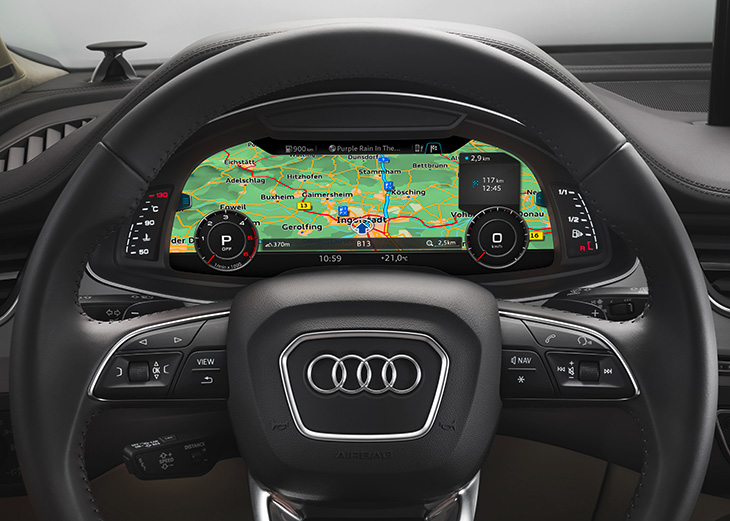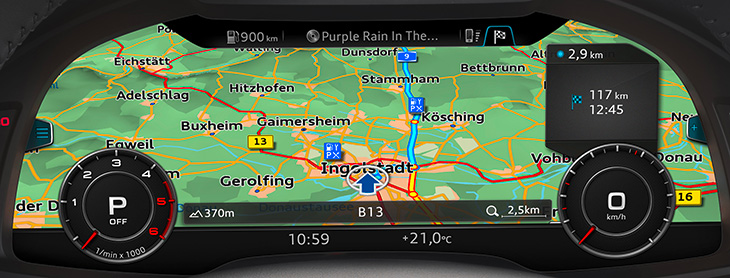 The premium brand is developing a new high-resolution map materials together with competent partners. A current example of the potential of this data is the predictive efficiency assistant in the new Audi Q7. It utilizes information about the topography to get the car to its destination with greater efficiency and convenience. High-resolution maps will also play a key role in piloted driving.
The premium brand is developing a new high-resolution map materials together with competent partners. A current example of the potential of this data is the predictive efficiency assistant in the new Audi Q7. It utilizes information about the topography to get the car to its destination with greater efficiency and convenience. High-resolution maps will also play a key role in piloted driving.
“The importance of high-resolution, three-dimensional maps will continue to grow in the future,” explains Prof. Dr. Ulrich Hackenberg, Audi Head of Development, and he refers to piloted driving as a typical application: “Here we primarily use the data in situations in which a precise prediction is crucial – e.g. data on expressway interchanges, road splits and entrance and exit ramps.” Audi is working on the navigation map of the future with strategic partners such as Dutch map and navigation supplier TomTom – utilizing various technology platforms in the process. The next generation of the Audi A8 will be a front-runner in piloted driving technology and the use of high-resolution maps.
Today, Audi customers can already realize significant benefits from precise map materials. The predictive efficiency assistant in the new Audi Q7 already utilizes highly precise route data that includes information on elevation profiles – it works with this data even while the driver is not actively using navigation. If desired, the system can also be used to help economize on fuel. It offers practical fuel-saving tips to drivers in situations in which reducing speed makes sense.
The predictive efficiency assistant recognizes curves, roundabouts and intersections, descents and ascents, as well as municipality border signs and speed limit signs – often before the driver even sees them. Drivers who fully utilize this features can reduce fuel consumption by up to ten percent.
Source: Audi
